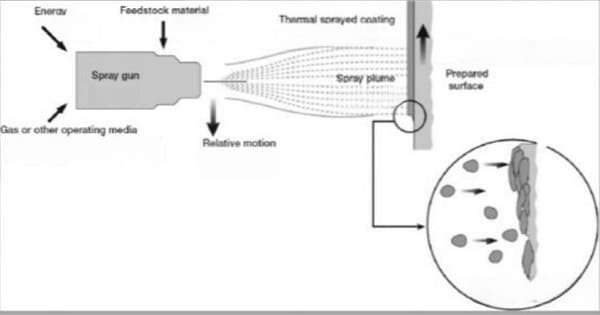Thermal Spraying is a versatile industrial technology used for surface coating and repair of engineering components. It enables the application of metals, alloys, oxides, ceramics, carbides, high-entropy alloys, powders, wires, rods, and composites onto different substrates, creating protective or functional coatings.

Thermal Spray Powders constitute over 70% of the total material used in thermal spray coating. The composition, distribution, morphology, and particle size of these powders vary depending on the preparation method. They must fulfill both coating functionality and process requirements, ensuring smooth, stable, and uniform powder delivery into the spraying flame for high deposition efficiency and consistent coating quality.
Spherical powders are commonly used in thermal spray coating. They have a smaller surface area, resulting in uniform heating. Compared to irregular powders, spherical powders exhibit less oxidation and contamination from surface impurities under the high-temperature flame of thermal spray.
Thermal Spray Powder Characteristics
Particle morphology | This refers to the geometry and surface characteristics of powder particles. The geometry mainly relates to the sphericity of the powder, which improves solid-state flowability. Surface characteristics include color and smoothness. Generally, spherical and dense powders yield superior coatings. |
Particle Size Distribution | Thermal spray powders must meet specific particle size requirements. Metal powders for flame spraying are typically less than 120 mesh, often between -180+320 mesh. Plasma-sprayed ceramic powders usually range from -140+320 mesh to -500+300 mesh, while HVOF-compatible powders range from 15 to 53µm, with finer powders between 5 and 25µm. Some HVOF systems can spray ultrafine powders below 10µm. |
Apparent Density | The higher the bulk density of agglomerated particles, the better their flowability and the higher their particle kinetic energy upon collision with the substrate during the same spraying process, resulting in a more dense coating. |
Oxygen Content | Metal powders inevitably undergo slight oxidation during the powder manufacturing process, resulting in higher oxygen content. The presence of oxides in the powder is detrimental as it can lead to the formation of pores and inclusions in the coating. Therefore, strict control is necessary to limit the oxygen content. Typically, the oxygen content in alloy powders is kept below 0.2% |
Thermal Spraying Powder Preparation Methods
- Atomization method
- Agglomeration sintering method
- Fusion crushing method
- Sintering crushing method
- Coating powder production
- Plasma spheroidization
Spherical powders are made using thermal plasma treatment, like RF plasma spheroidization. RF discharge plasma torches reach temperatures of up to 10,000 K and can spherize refractory metals and ceramics to increase particle sphericity and reduce irregularities. This method can transform powder materials for improved performance.
Choosing the right thermal spray material is key to coating preparation. Different processes and materials yield coatings with varying performance, strength, and hardness. Therefore, when enhancing the surface of a workpiece, it's important to consider and produce high-quality coatings that suit the desired performance of the workpiece.
Heeger Materials is a reputable supplier offering top-notch Spherical Powder products at competitive prices, which are widely used in Thermal Spraying and 3D printing industries. If you're interested, feel free to reach out to us at [email protected] for a quote, and we guarantee a response within 24 hours.


